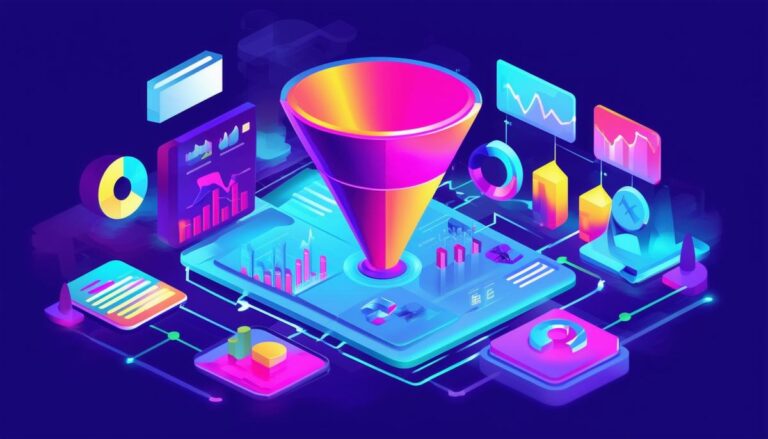Advertising analytics software has become an essential tool for modern marketers, enabling them to refine strategies and achieve better outcomes through detailed insights into ad performance and consumer behavior. As we examine the roles and benefits of these tools, we will uncover how they contribute to making informed marketing decisions and optimizing advertising spend.
Overview of Advertising Analytics Software
Advertising analytics software gathers data from various digital channels where advertisements are displayed, such as social media, search engines, and dedicated ad platforms. It tracks viewer interactions with ads, gathering information like click-through rates, impressions, engagement levels, and demographic specifics of the audience.
After data collection, these platforms conduct an analysis, breaking down data by campaigns, creative contents, and demographics to identify patterns and trends. The analysis provides insights into which advertisement strategies work best with specific demographic groups and which platforms yield the highest engagement rates.
Advertising analytics software allows marketers to adjust campaigns in real-time based on performance metrics. If certain ads underperform or outperform expectations, adjustments can be made swiftly to capitalize on what works or to pull back on what doesn't.
This software can also predict future trends based on historical data. Through predictive analytics, it assesses past advertising activities to forecast future consumer behaviors, helping in planning more effective campaigns and budget allocation.
Advertising analytics software is essential for calculating return on investment (ROI). By accurately tracking expense versus performance metrics, businesses can measure the financial effectiveness of their campaigns, ensuring that they are making informed decisions that lead to tangible outcomes.
The use of advertising analytics software empowers businesses to launch targeted marketing campaigns, optimize advertising spending, and enhance overall marketing strategies through detailed insights into ad performance and consumer behavior. Companies can continuously refine their advertising approaches, leading to more cost-effective marketing efforts.
Key Features of Ad Analytics Tools
Fraud detection is a crucial function of top-tier advertising analytics platforms. With rising concerns over digital ad fraud, where traffic is often generated by bots instead of real human users, this feature helps isolate genuine engagement and interactions from misleading data. Effective fraud prevention tools actively monitor for irregular patterns in traffic and engagement, alert marketers to potential threats, and help maintain the integrity of advertising data.
Cross-channel retargeting allows marketers to track and engage with users across different devices and platforms, ensuring that the advertisements they interact with are consistent and persistent, based on their previous interactions. This continuity enhances the user experience and increases the chances of conversions.
Partner marketing functionality within advertising analytics software strengthens collaborative efforts by aligning marketing strategies among partners. It streamlines data sharing between platforms and allows for deploying unified marketing campaigns that blend seamlessly across multiple channels or partners. Combined analytics from cooperative initiatives can highlight which partnerships and strategies drive the most value, enabling focused investments in profitable ventures.
These features integrate with overall marketing strategy analytics, contributing to a holistic view of tactical performances and outcomes. By employing these key capabilities, advertisers can craft sophisticated strategies that ensure optimal allocation of resources, enhance engagement, and maximize overall campaign effectiveness, ultimately boosting ROI and achieving greater market success. Understanding these functionalities aids marketers in choosing the right advertising analytics tools that track, analyze, strategize, and prevent losses from ad spend, setting a strong foundation for data-driven marketing decisions.
Benefits of Using Ad Analytics Software
Advertising analytics software provides enhanced marketing intelligence by diving deep into consumer interaction data. It identifies which messages resonate best with specific segments, optimizes delivery timings for maximum engagement, and discerns patterns that indicate consumer preferences and behaviors.
Improved return on investment (ROI) is a significant advantage of these analytics tools. With accurate tracking and evaluating capabilities, marketers can pinpoint which aspects of their strategy are producing tangible results and which are not. This allows for re-allocation of budgets from underperforming ads to initiatives with higher returns, maximizing overall marketing expenditure efficacy.
Effective fraud detection is another key benefit. Ad analytics software employs sophisticated algorithms to spot anomalies that might suggest fraudulent activities, such as artificial traffic generated by bots. By ensuring only genuine user interactions are considered, businesses safeguard themselves against skewed data that could lead to flawed strategic decisions.
These software tools enable businesses to go beyond traditional static reporting, providing dynamic dashboards that reflect real-time data and insights. This accelerates decision-making, helping marketers to be more agile and reactive to market changes.
Ad analytics software also integrates seamlessly with existing marketing technologies, creating a comprehensive view of all marketing efforts. This unity aids in unraveling the full impact of integrated marketing strategies, enhancing understanding across campaigns and platforms.
Embracing advertising analytics software is a strategic imperative driving precision, efficiency, and competitiveness in demanding market landscapes. It equips businesses with foresight and flexibility essential for future success in an ever-evolving advertising realm. By bringing data to the forefront of strategy, companies ensure that every decision is informed, every dollar is justified, and every campaign is primed for success.

Top Advertising Analytics Platforms
- Google Analytics: A comprehensive and versatile toolset that facilitates detailed web and marketing analytics. It excels in tracking user behavior in real-time, assisting businesses in understanding the effectiveness of their marketing endeavors and enhancing strategic deployments on websites and campaigns.
- Moat Analytics: Part of Oracle Data Cloud, delivers a distinctive proposition through its focus on attention analytics. It provides in-depth measures of viewer engagement beyond just impressions and clicks, offering metrics such as viewability, hover time, and audibility of video ads, which are crucial for publishers and advertisers aiming to capture and retain consumer attention.
- SEMrush: Boasts a suite particularly tuned to the needs of SEO and SEM professionals. It offers expansive keyword research, comprehensive site audits, and competitive intelligence. Those invested in bolstering their search engine prowess find SEMrush's analytics invaluable for developing effective content strategies and understanding search marketing landscapes.
Each tool has unique strengths that cater to distinct facets of advertising analytics. Businesses can create data-driven marketing environments that promise sustainability and growth through personalized, granular insights. Strategically deploying these tools per specific business needs is imperative in reaping the full range of benefits associated with digital advertising analytics.
Integration and Compatibility
The integration capabilities of advertising analytics software serve as a critical bridge between multiple marketing tools and platforms, ensuring a seamless workflow and reinforcing the efficacy of marketing efforts. Successful integration facilitates smooth communication between different software systems, consolidating disparate data sources into a cohesive overview that marketers can easily interpret and act upon. This interconnected landscape accelerates process efficiencies and enriches data fidelity.
Advertising analytics platforms are often designed with flexible architectures to accommodate a myriad of third-party applications, ranging from Customer Relationship Management (CRM) systems and Content Management Systems (CMS) to other specialized marketing automation tools. This versatility is paramount in today's digitized environment where multifunctional channel strategies are a requisite for remaining competitive.
Integrating an ad analytics platform with a CRM system can turn insights into actionable customer engagement strategies, focusing on converting insights into sales. Marketers harness these combined metrics to execute personalized advertising campaigns based on individual customer behaviors and histories observed across multiple touchpoints. By leveraging this integrated data approach, businesses can pinpoint their audience's journey, producing targeted messages that speak directly to their needs with heightened precision.
Compatibility with content management systems allows for direct insights into how content affects viewer behavior and engagement rates. The ability to execute changes to digital campaigns in response to real-time analytics represents an enormous benefit.
The ability to plug into existing digital marketing tools like PPC management software or social media tracking utilities streamlines overall campaign management. A holistic view, capturing details from initial ad inquiries through to final sales conversions, informs more effective budget allocation and sharper strategic orientations.
The trend towards AI-driven platforms in digital advertising encourages deeper integration capabilities. Advertising analytics backed by AI algorithms offer predictive insights not only about campaign outcomes but about optimizing communication between integrated systems. This automation and predictive capacity minimize human labor in micromanaging facets of marketing platforms and channels, enabling streamlined analytical operations that contribute to overall business growth.
The capacity of ad analytics software to seamlessly integrate with an array of marketing tools is a crucial strategy for achieving operational symbiosis. As the digital ecosystem becomes more complex and the volume of data grows, cultivating integrated solutions is essential to harnessing powerful insights. With these synergies in place, companies can maximize their reach and relevance, ensuring each marketing initiative is built on a robust understanding derived from a unified analytical platform. This integrative dynamism supercharges the effectiveness of advertising efforts and supports sustained business evolution in a competitive market.

Future Trends in Advertising Analytics
As digital marketing evolves, innovations in advertising analytics are increasingly driven by artificial intelligence (AI) and machine learning (ML). These technologies are set to reshape the way marketers strategize, execute, and measure the success of advertising campaigns.
AI in advertising analytics is already making significant inroads through predictive analytics, processing vast amounts of historical data to forecast future consumer behaviors and campaign outcomes. In the near future, AI technologies will enable more sophisticated personalization at scale, allowing for almost individually customized messaging that resonates with the unique preferences and habits of every consumer.
Machine learning enhances algorithmic capabilities to learn from data without explicit programming. In ad analytics, ML can automate complex decision-making processes, refine targeting strategies over time, and dynamically optimize budgets across different channels based on real-time performance data. Such capabilities will enable advertisers to react instantaneously to market changes or shifts in consumer behavior, maximizing the efficiency of ad spend.
The integration of AI with natural language processing (NLP) technologies opens up new avenues for analyzing textual data at scale, such as social media posts or user reviews, to glean insights into public sentiment and brand perception. As NLP technologies advance, they will enable more nuanced interpretation of the subtleties of human communication, capturing socioeconomic, cultural, and emotional contexts that influence consumer behaviors.
The rise of AI-driven visual analytics tools will add depth to advertising insights. These tools analyze image and video content to uncover patterns and trends that elude traditional data analysis. Visual analytics can evaluate which colors, forms, or movements capture viewers' attention most effectively, informing more impactful creative strategies for video and display ads.
The integration of IoT devices with advertising analytics platforms also heralds transformative potentials. IoT devices generate a continuous stream of real-time user data, from wearable fitness trackers to smart home appliances. By leveraging this data, advertisers can gain unprecedented insight into daily habits and preferences of consumers, allowing for more precisely targeted advertising strategies that seamlessly slot into consumers' lifestyles.
Advancements in advertising analytics tools will not only increase the effectiveness of traditional metrics like ROI but will also champion newer metrics tailored to the dynamically changing digital landscape. These include engagement metrics that better reflect user interaction in an omnichannel environment, sustainability metrics linked to corporate social responsibility initiatives, and privacy compliance metrics as data regulations become stricter.
Future trends in advertising analytics point towards a landscape where strategies are not only informed by data but are dynamically molded by continuous learning systems capable of unprecedented personalization and adaptation. The synergy between AI and advertising analytics melds the predictive power of machine learning with the expansive potential of data generation and collection, shaping a future where marketing strategies become increasingly insightful and inherently agile. Such innovations promise to streamline existing processes and revolutionize the paradigms of advertising effectiveness.

The paramount importance of advertising analytics software lies in its ability to provide comprehensive insights that guide strategic marketing decisions. By effectively harnessing this technology, businesses can optimize their advertising efforts and ensure that each campaign is aligned with their overarching goals, ultimately driving success in a competitive digital landscape.
- Chaffey D, Smith PR. Digital Marketing Excellence: Planning, Optimizing and Integrating Online Marketing. Routledge; 2017.
- Davenport TH, Harris JG. Competing on Analytics: The New Science of Winning. Harvard Business Press; 2007.
- Sterne J. Artificial Intelligence for Marketing: Practical Applications. John Wiley & Sons; 2017.


